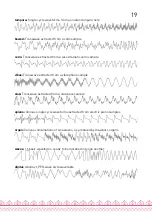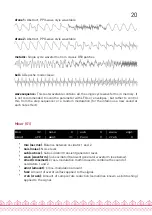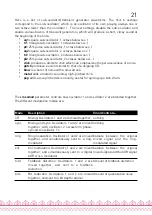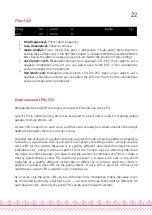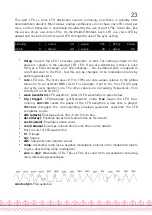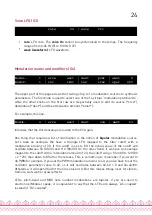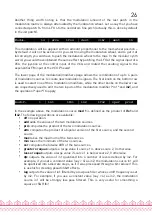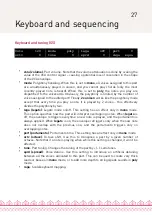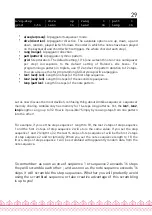
none:
silence
This simply switches off the oscillator. Switching the oscillators off is useful if you want to
use the sine-wave produced by the filter’s self-oscillation as the sole sound source.
saw:
sawtooth
This waveform is perfect for basses and brass sounds. The parameter controls the
waveshapping – when its value is increased, an increasingly large section of the waveform
is shifted up. This waveform is band-limited. Thus, only a limited amount of aliasing
artifacts will be heard when playing high-pitched notes.
square:
square wave
The parameter controls the pulse-width. This waveform is perfect for simulating a
clarinet, for basses, “hollow” sounds or Depeche Mode-like leads. This waveform is band-
limited and only a limited amount of aliasing will be heard when playing high-pitched
notes.
You will observe that there is a slight difference in sound when moving the parameter
from 0 to 1. To offer the best sound quality, the pulse width = 50% flavor is read straight
from a wavetable at full sample rate, while the pulse width > 50% flavor is obtained from
two dephased sawtooth waves, evaluated at half the sample rate. For bass sounds, for
which aliasing is not going to be a problem, it is recommended to use
pwm
instead of
square
to get a beefier sound.
triang:
triangle wave
A pure waveform, which serves as a good basis for flute or soundchip-like leads. The
parameter controls a kind of waveshapping, clipping the bottom of the waveform. This
waveform is band-limited and will still sound fine above C5.
14



















